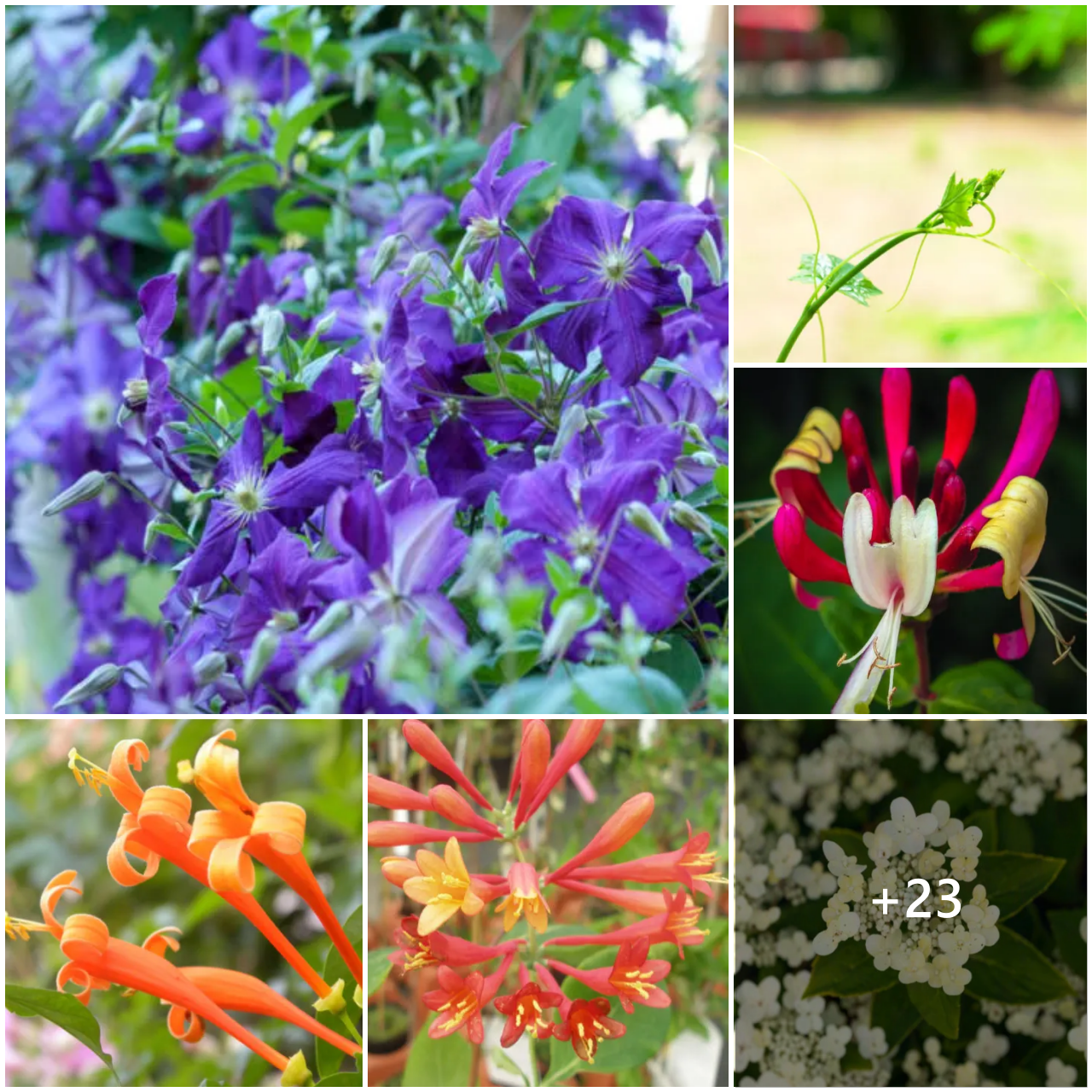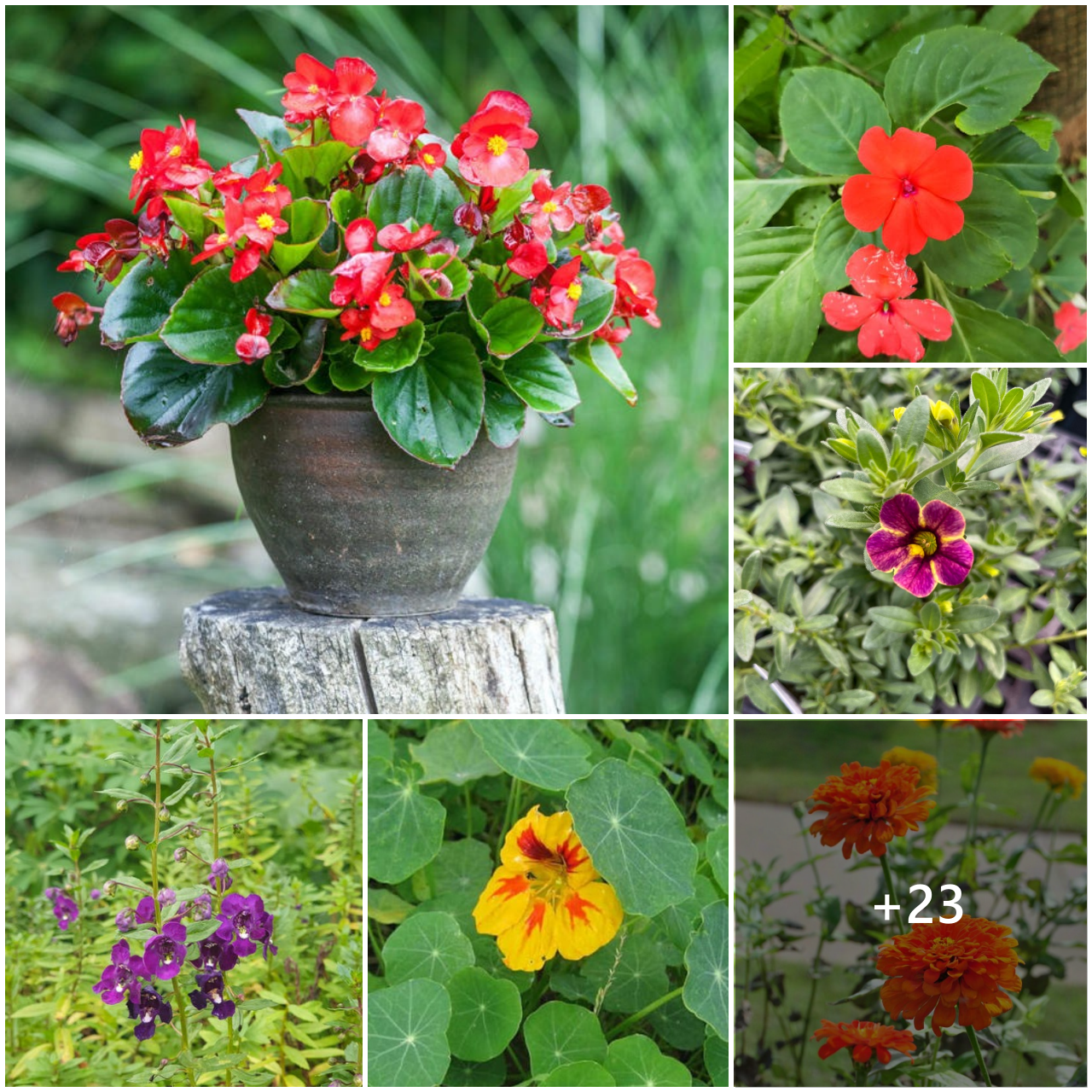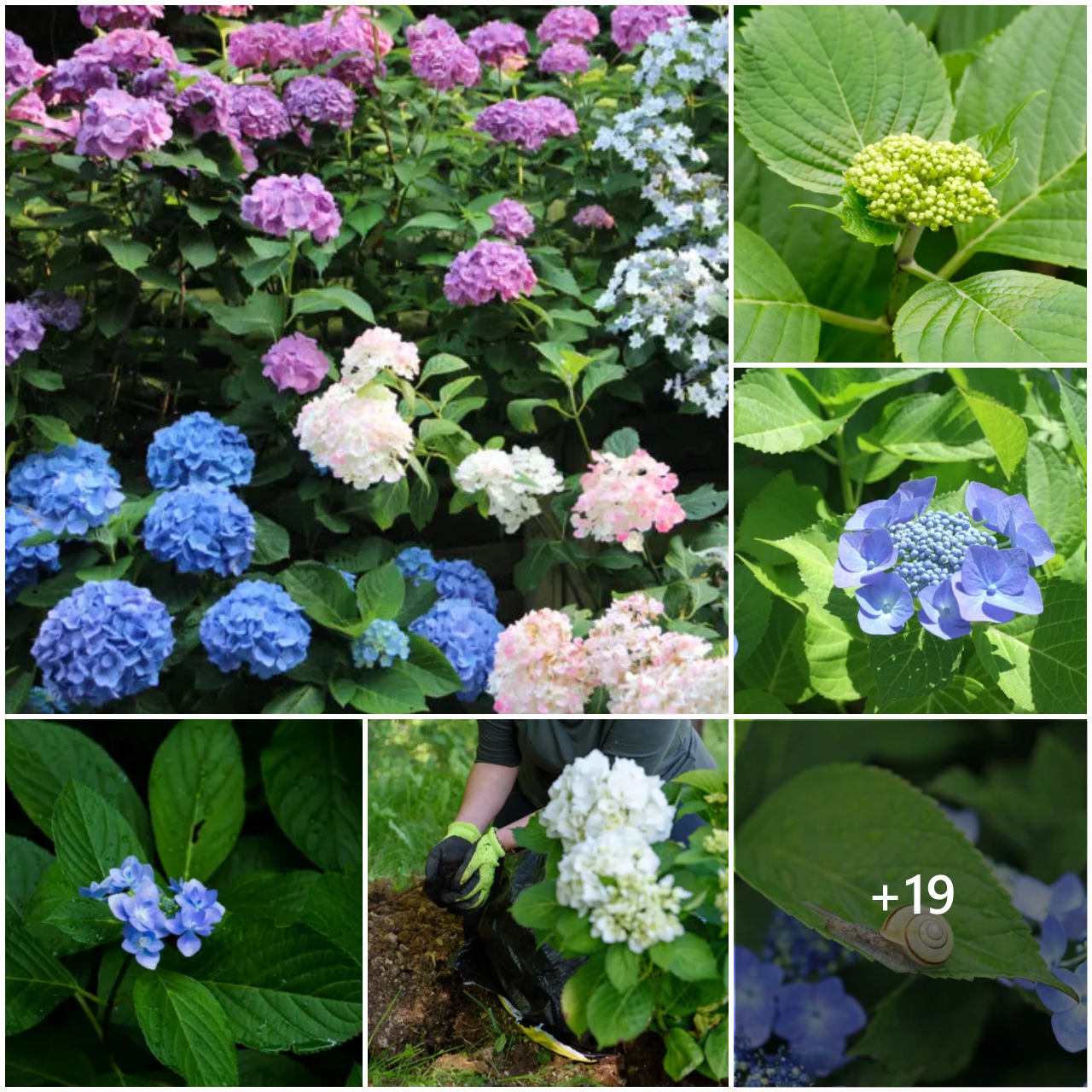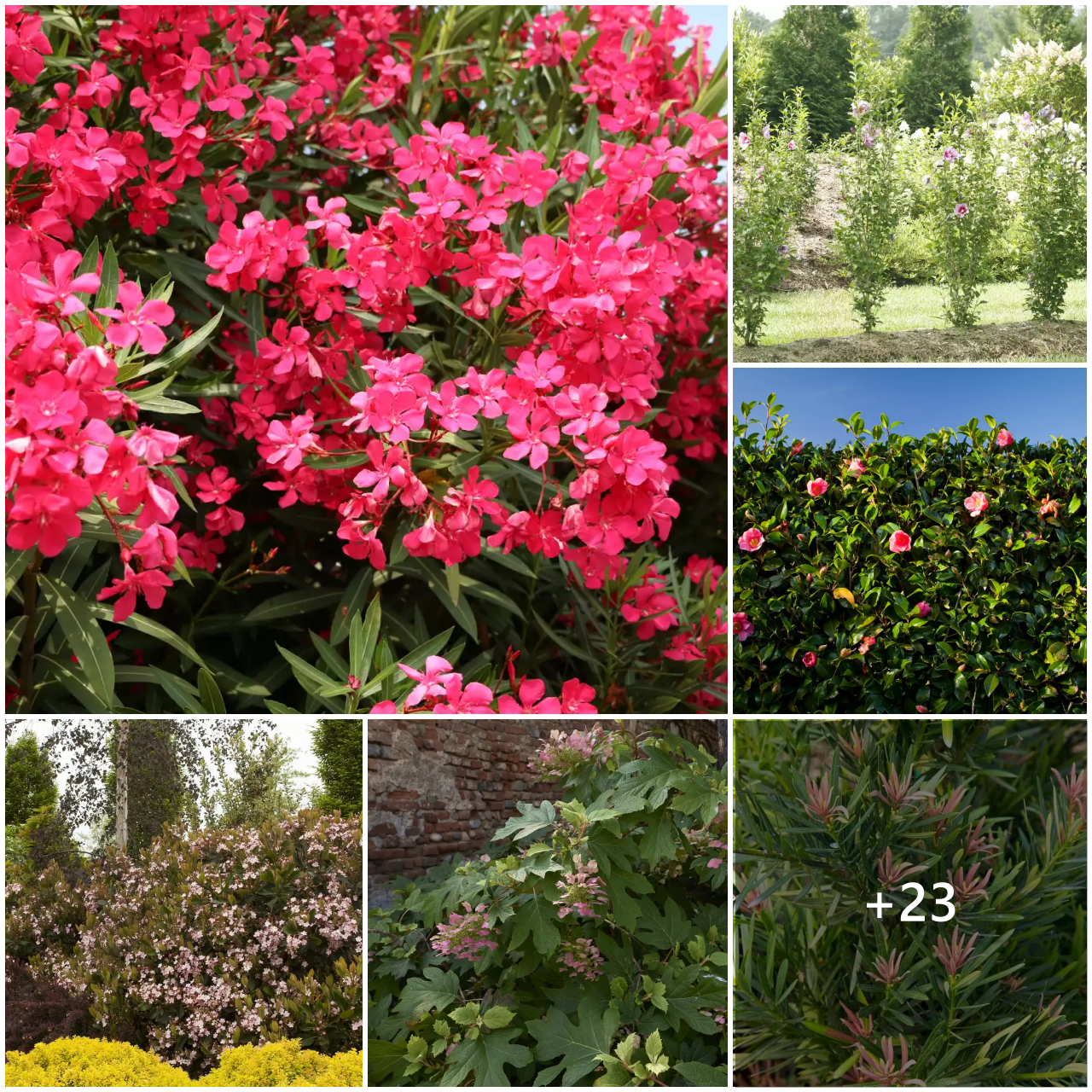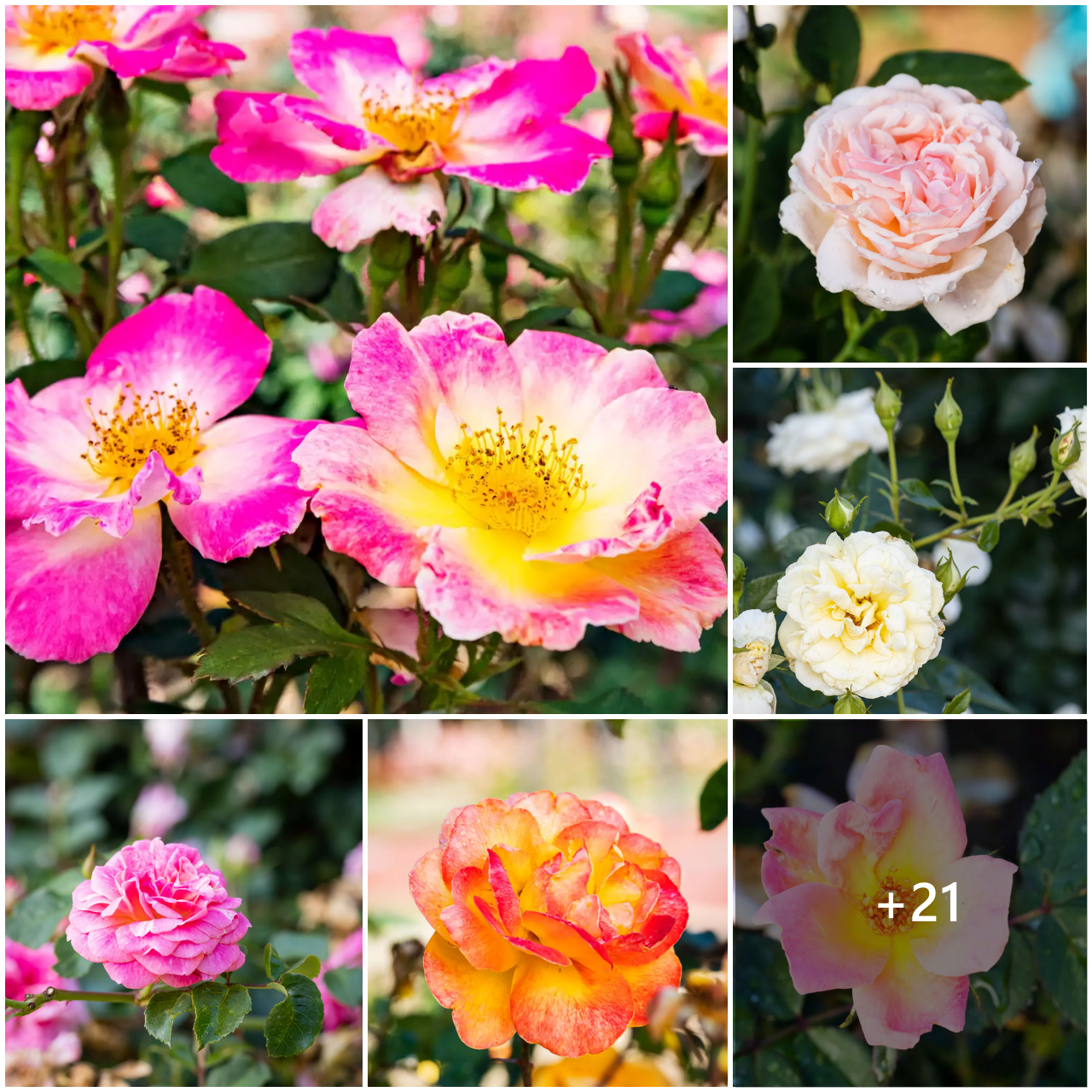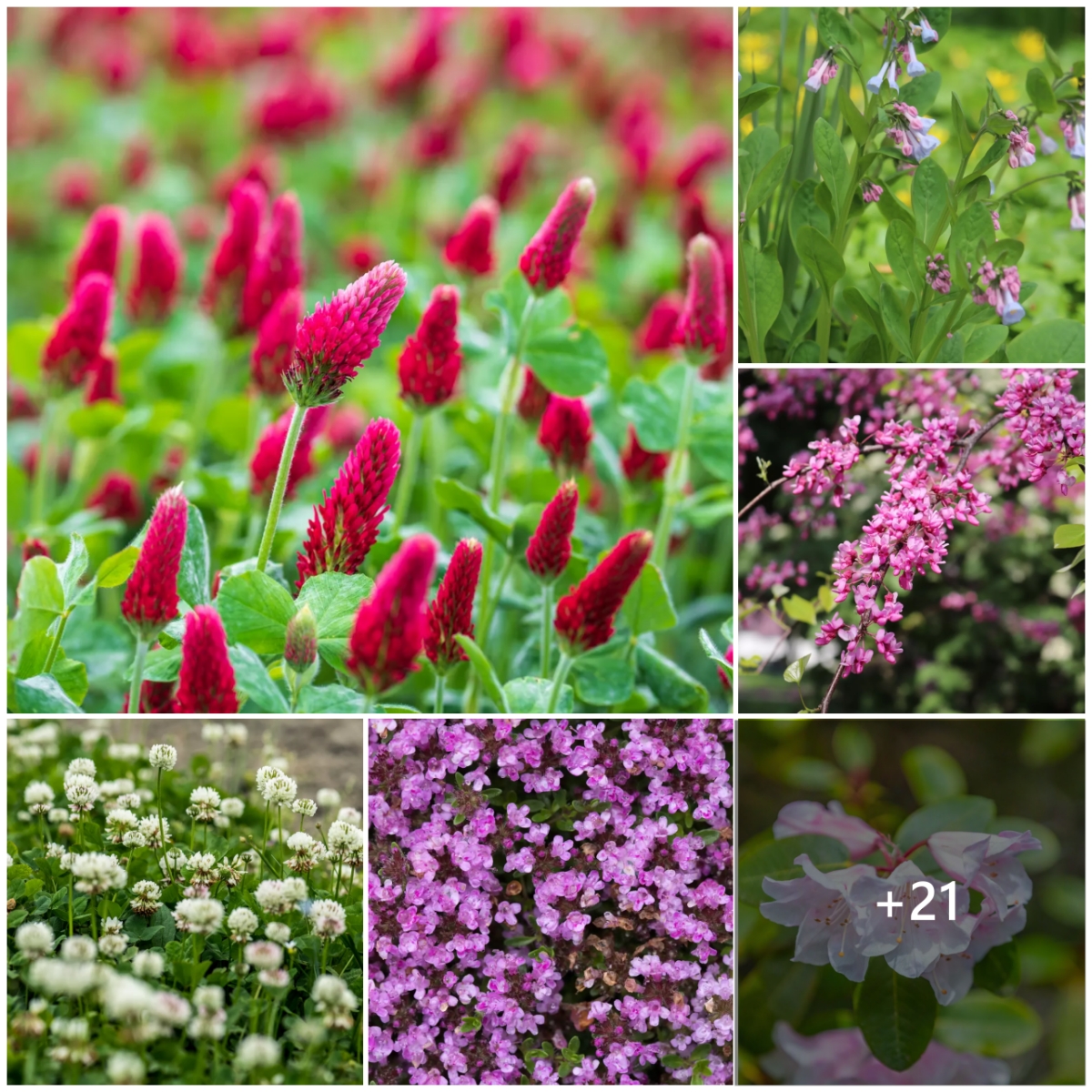Summer snapdragon adds continuous color to any garden.
New to many greenhouse shelves, angelonia (or summer snapdragon) is a spectacular addition for continuous color in any garden. It has only been around since the late 1990s, but there are already several fresh additions in this plant’s playbook. A tough perennial, angelonia stands up against summer’s heat and humidity with no problem, making it a hearty and colorful addition to any sunny spot.
Most angelonia plants grow upright with spires of flowers and deep green, glossy foliage. The height range is usually between 1 to 2 feet. Some angelonia plants grow more horizontally than vertically. These varieties usually don’t grow more than 1 foot tall, but they spread out nicely. If you’re looking for a cascading trailer, angelonia isn’t the best fit. It doesn’t spill over the edges of containers or walls; instead, it grows straight out.
If you look closely at summer snapdragon flowers, you’ll see where this plant got its nickname: Blooms are reminiscent of the wide-open mouth of a monstrous dragon, but unlike true snapdragons, angelonia flowers present as one fused petal with no hinges. The flowers tend to appear in the blue/purple to white spectrum, and a few red varieties have popped up recently.
Angelonia Overview
| Genus Name | Angelonia |
| Common Name | Angelonia |
| Plant Type | Annual, Perennial |
| Light | Sun |
| Height | 1 to 3 feet |
| Width | 1 to 2 feet |
| Flower Color | Blue, Pink, Purple, Red, White |
| Foliage Color | Blue/Green |
| Season Features | Fall Bloom, Spring Bloom, Summer Bloom, Winter Bloom |
| Special Features | Cut Flowers, Fragrance, Good for Containers, Low Maintenance |
| Zones | 10, 11, 9 |
| Propagation | Seed, Stem Cuttings |
| Problem Solvers | Drought Tolerant |
Where to Plant Angelonia
This South American native loves lots of sun and damp soil. It is hardy in USDA zones 9–11 and grows as an annual elsewhere in the country. Plant angelonia in full sun and rich soil that has been amended with compost.
Erect spires of angelonia fit nicely into the middle of a bed or border. It’s also tall enough to act as a “thriller” in a container of mixed plants with similar light and water needs.
How and When to Plant Angelonia
Set out angelonia bedding plants two or three weeks after the last frost in spring. Space them 12 to 18 inches apart in rich, well-draining soil and keep them moist. When they are 6 inches tall, pinch out the tips of the stems to encourage branching. After they are established, they don’t require as much water—only about an inch a week. Apply a layer of mulch around the plants to hold in the moisture.
If you can find seeds for angelonia, lightly press them into the soil in early spring after the last frost in zones 9–11. In cooler areas, start them indoors six weeks before the last frost. Press the seeds into the amended garden soil or potting mix, but don’t cover them. The light aids germination. When growing them indoors, provide bright light and temperatures between 70°F and 75°F.
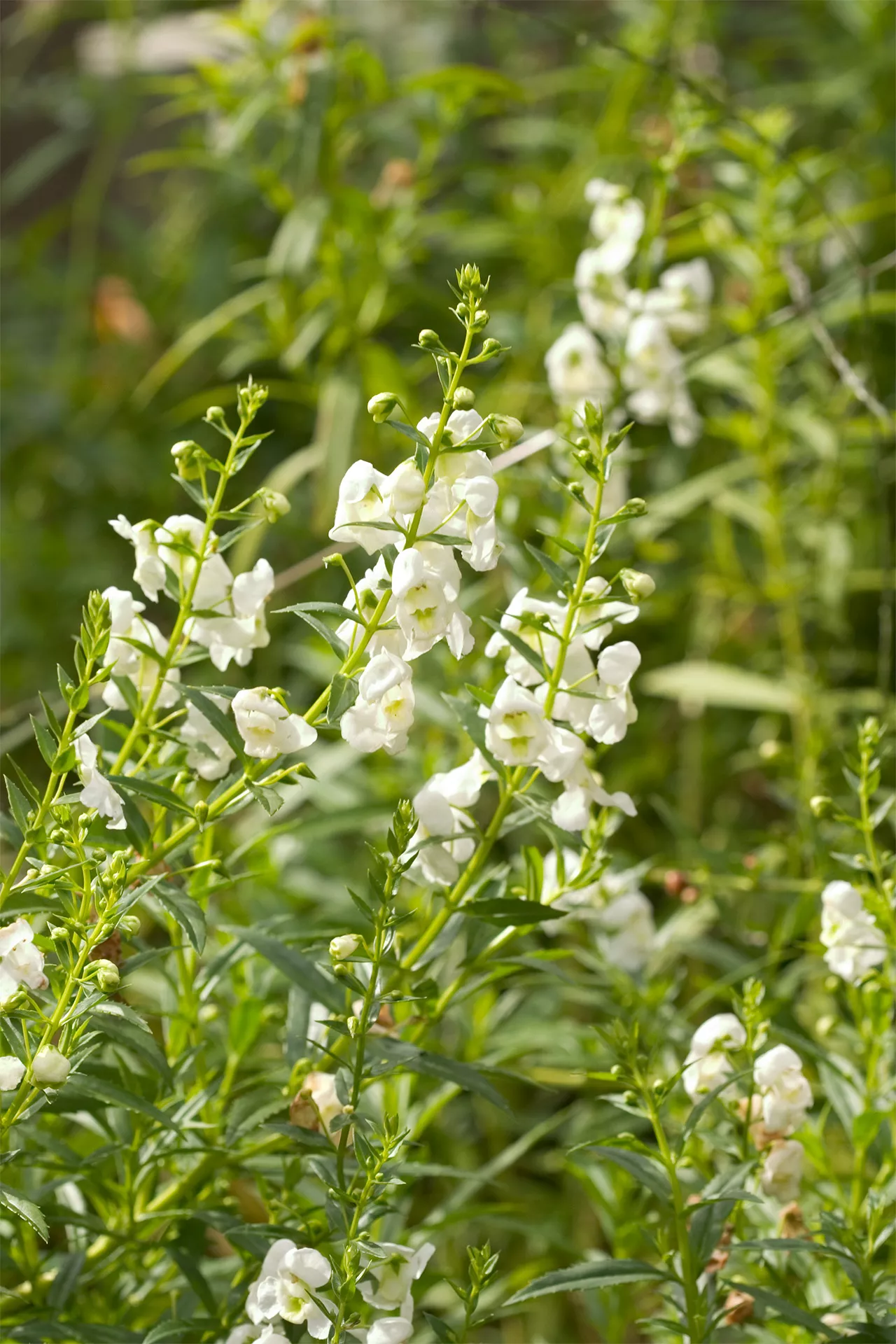
Angelonia Care Tips
Light
When planting angelonia, look for sunny spots with lots of airflow. Keep in mind that this plant won’t produce many flowers and is more disease-prone when it doesn’t receive eight hours of sun daily.
Soil and Water
Angelonia plants prefer moist, well-draining soil, but after they are established, they can withstand brief periods of drought.
Temperature and Humidity
Don’t worry about too much heat or humidity; angelonia plants are fairly drought tolerant and have no problem with hot, humid summer days.
Fertilizer
Fertilize angelonia plants lightly with a flower fertilizer following the product instructions. Don’t over-fertilize, or the plant will become leggy and produce more foliage than flowers.
Pruning
Good news: Angelonia produces flowers all summer long, and doesn’t require any deadheading to keep blooms going. If the plant becomes leggy, rejuvenate it in midsummer by cutting it back by half.
Pests and Problems
Angelonia is relatively pest-free, although aphids can become a problem early in the growing season. A strong spray of water and a couple of applications of insecticidal soap, following the product instructions, should take care of the matter.
How to Propagate Angelonia
Nonpatented angelonia plants are best propagated via stem cuttings. Seeds are now available for some popular cultivars. Seeds from garden hybrids won’t produce plants identical to the parent plant.
To take a stem cutting, use a sharp knife to cut a 3-inch section from the tip of an angelonia stem. Remove any leaves from the bottom half of the cutting. Dip the end in rooting powder and plant it in a pot with a well-draining potting mix. Put the pot in a bright area out of full sun.
Sow seed six to eight weeks before the last spring frost. Sow the seeds 1/8 inch deep in a seed-starting mix and keep them moist. Maintain a temperature of 70°F-75°F until the seeds germinate, using bottom heat if necessary. After they germinate, move them to a sunny window sill or position them beneath a fluorescent plant light turned on for 16 hours a day.
Seeds can be sown directly in the garden after the last frost. Cover them with 1/8-inch of amended soil, firm the soil with your hand, and water the seeds. Keep the soil moist until the seedlings come up in two weeks. Then, thin the plants to 12–18 inches apart.
Types of Angelonia
There are a variety of angelonia selections. Some series boast the largest bloom size, while others offer dwarf plants (perfect for container culture). One of the more recent developments in angelonia breeding is seed-grown varieties. This option helps to lower production costs and offers quality plants at low prices, as well as a good variety of color options.
One of the most acclaimed of the angelonias is Serena Purple angelonia (Angelonia angustifolia). Serena flowers have an extensive blooming season and are dependable and hardy, even in blazing summer temperatures.
‘Angelmist Dark Plum’ Angelonia

Angelmist Dark Plum angelonia is one of the darkest color selections; it bears deep purple flowers all summer and grows 2 feet tall.
‘Angelmist Lavender’ Angelonia
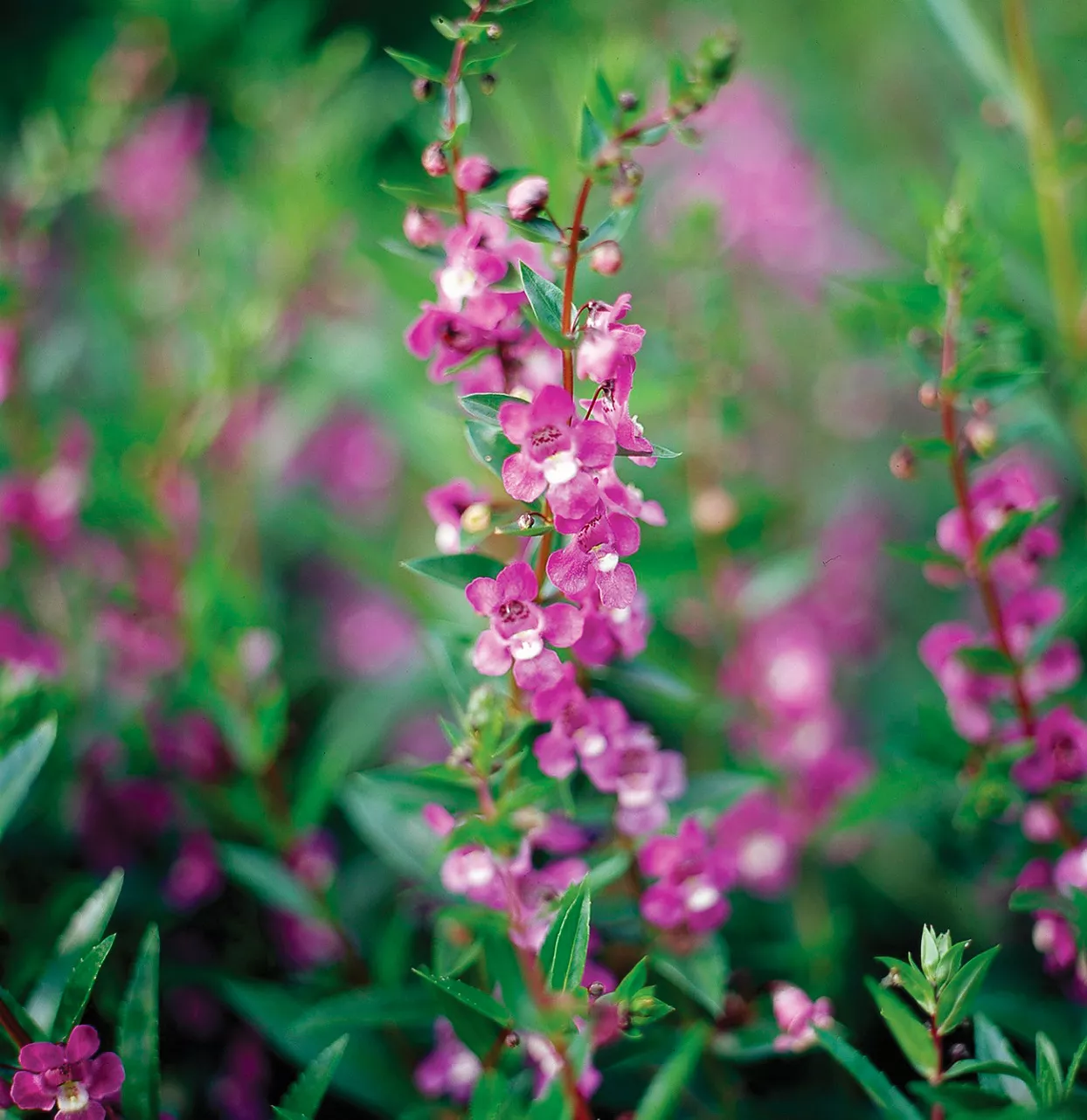
Angelmist Lavender angelonia offers clear lavender-purple blooms on 2-foot-tall plants.
‘Angelmist Purple Stripe’ Angelonia
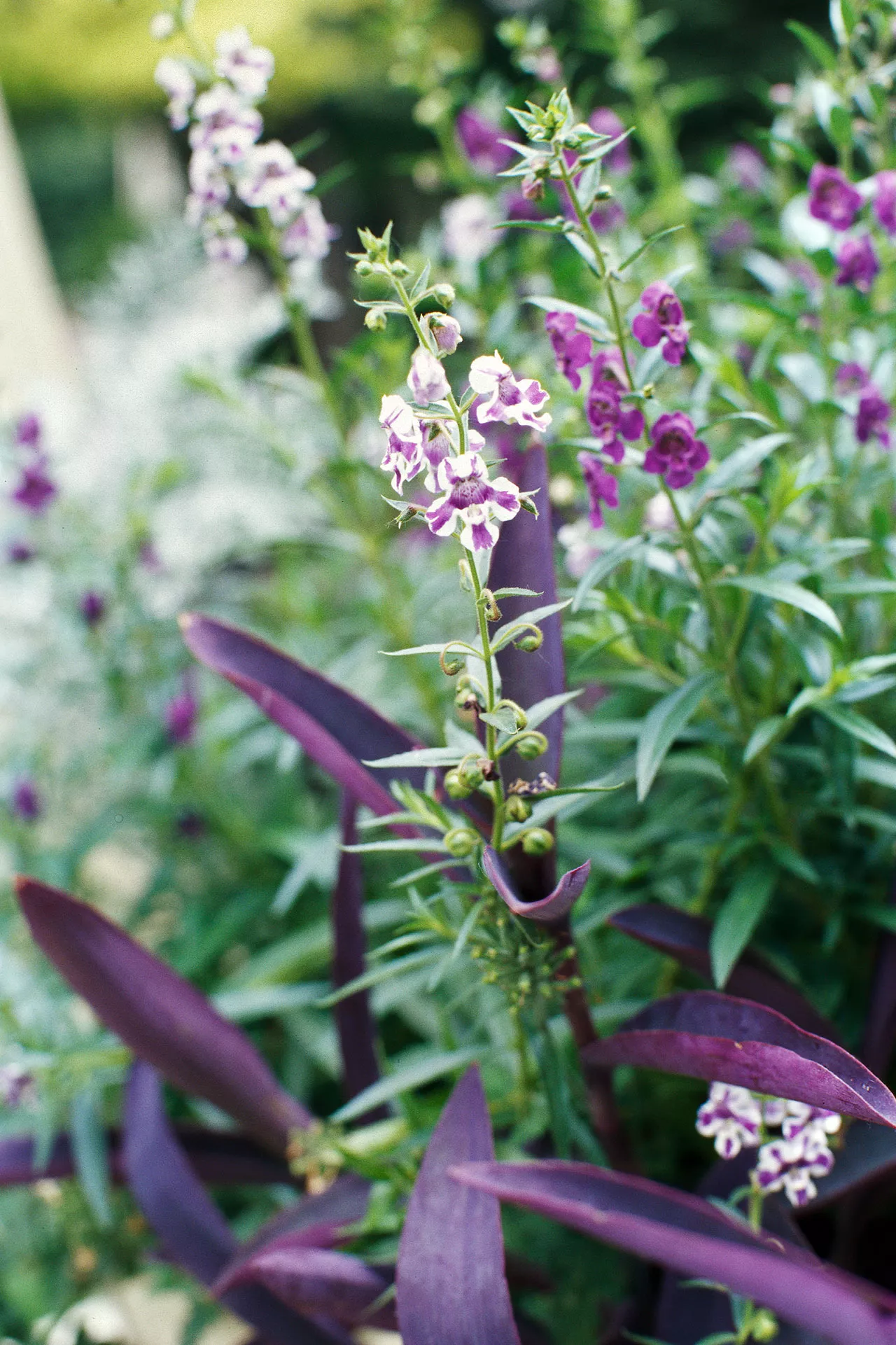
Angelmist Purple Stripe angelonia is an eye-catching selection with deep purple flowers that have bold white edges. It grows 2 feet tall.
‘Serenita Raspberry’ Angelonia
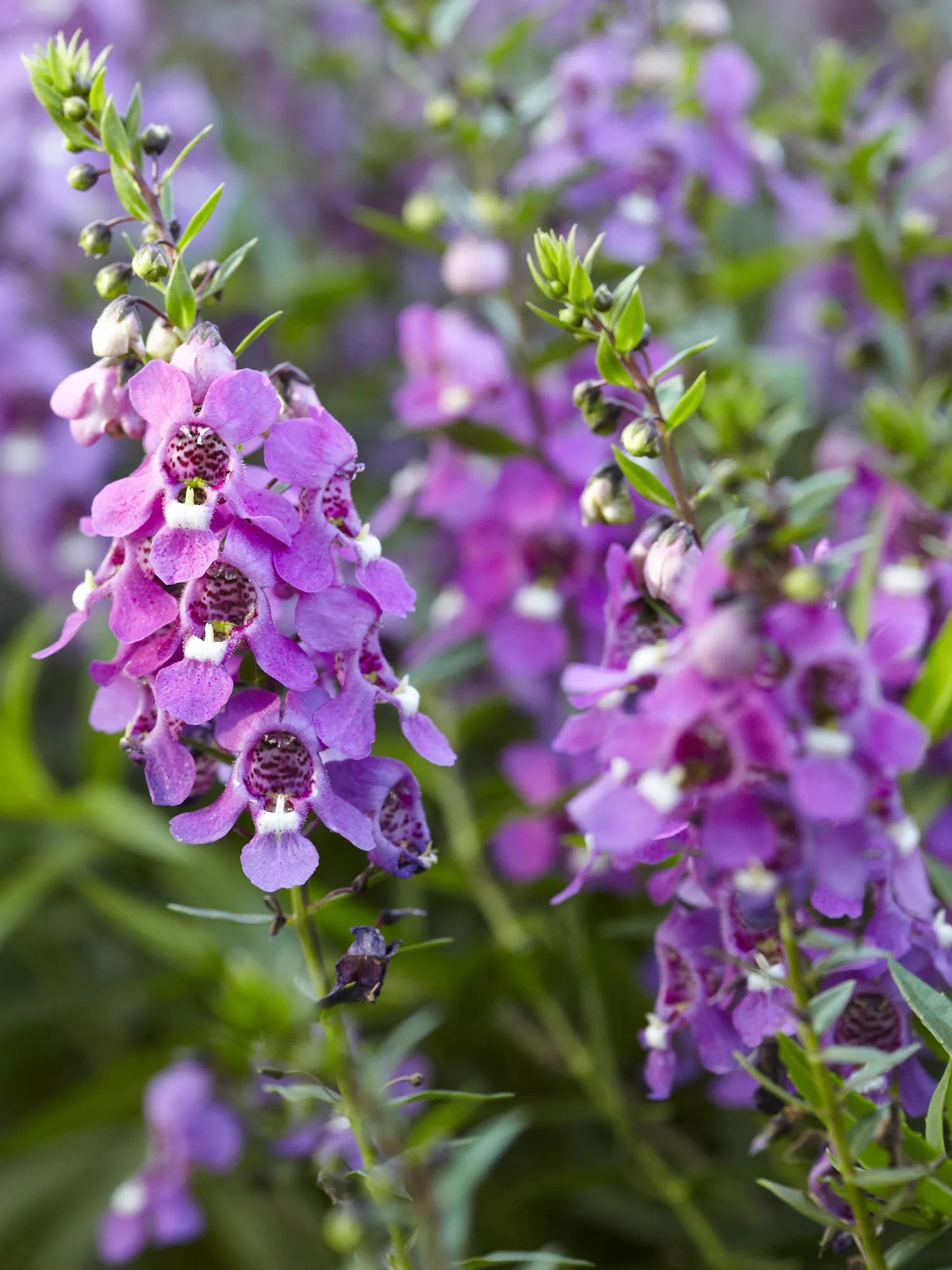
Angelonia angustifolia is a seed variety that is smaller than its Serena series siblings.
‘Serena White’ Angelonia
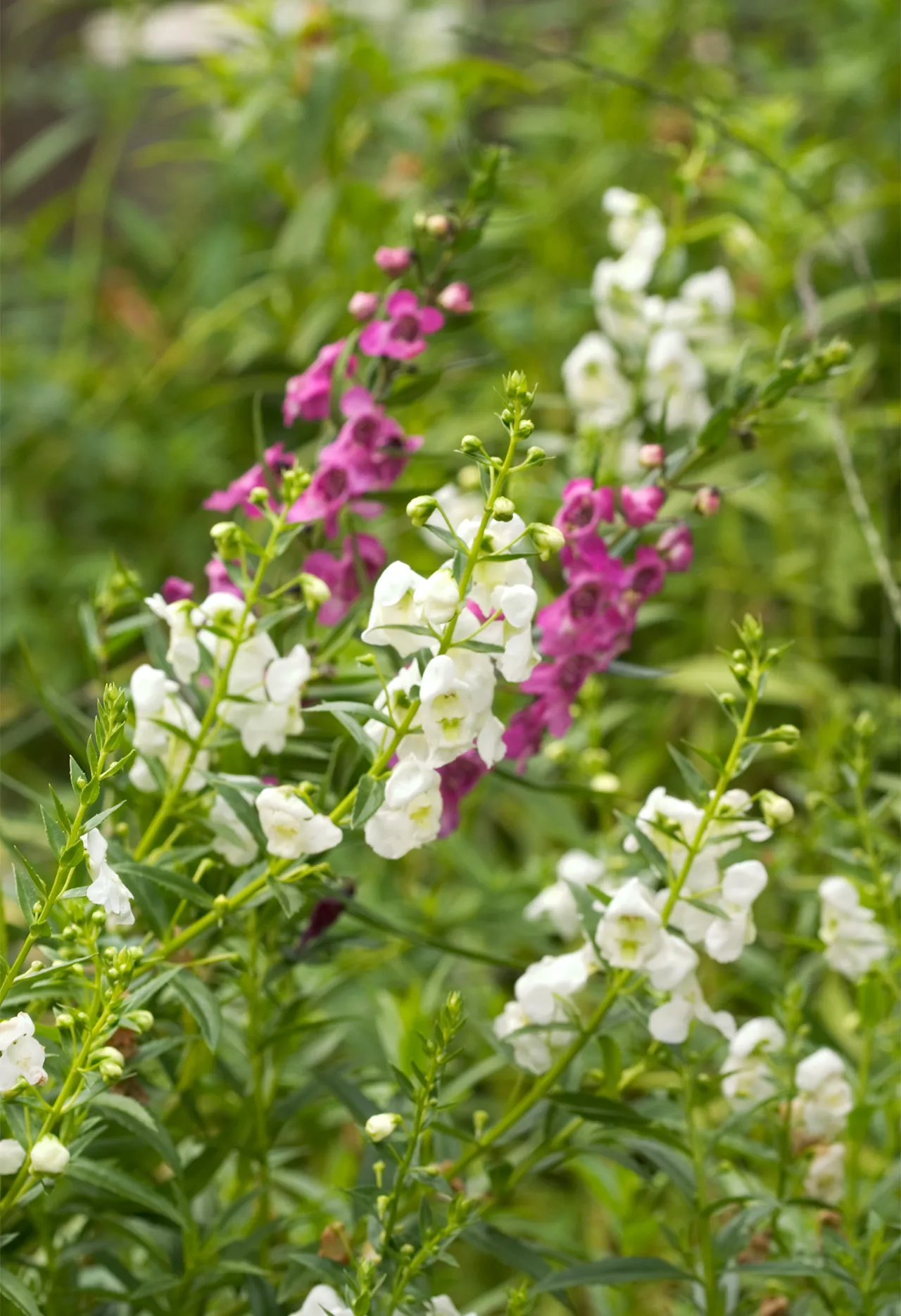
Serena White angelonia forms a compact, mounding plant that stays about a foot tall and is covered in white blooms.
‘Archangel Purple’ Angelonia
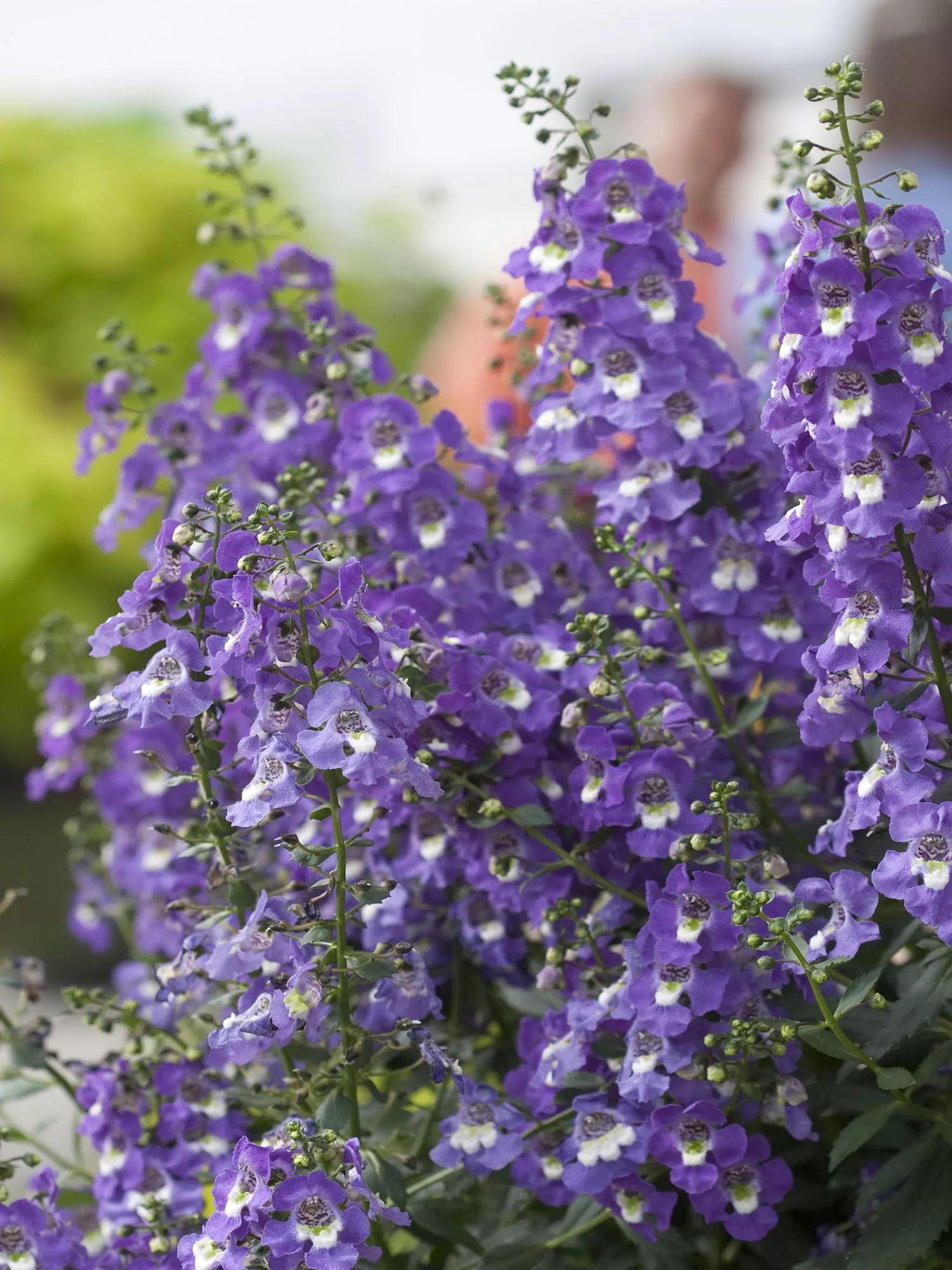
This Angelonia angustifolia is an upright plant covered in exceptionally large flowers.
Angelonia Companion Plants
Dusty Miller
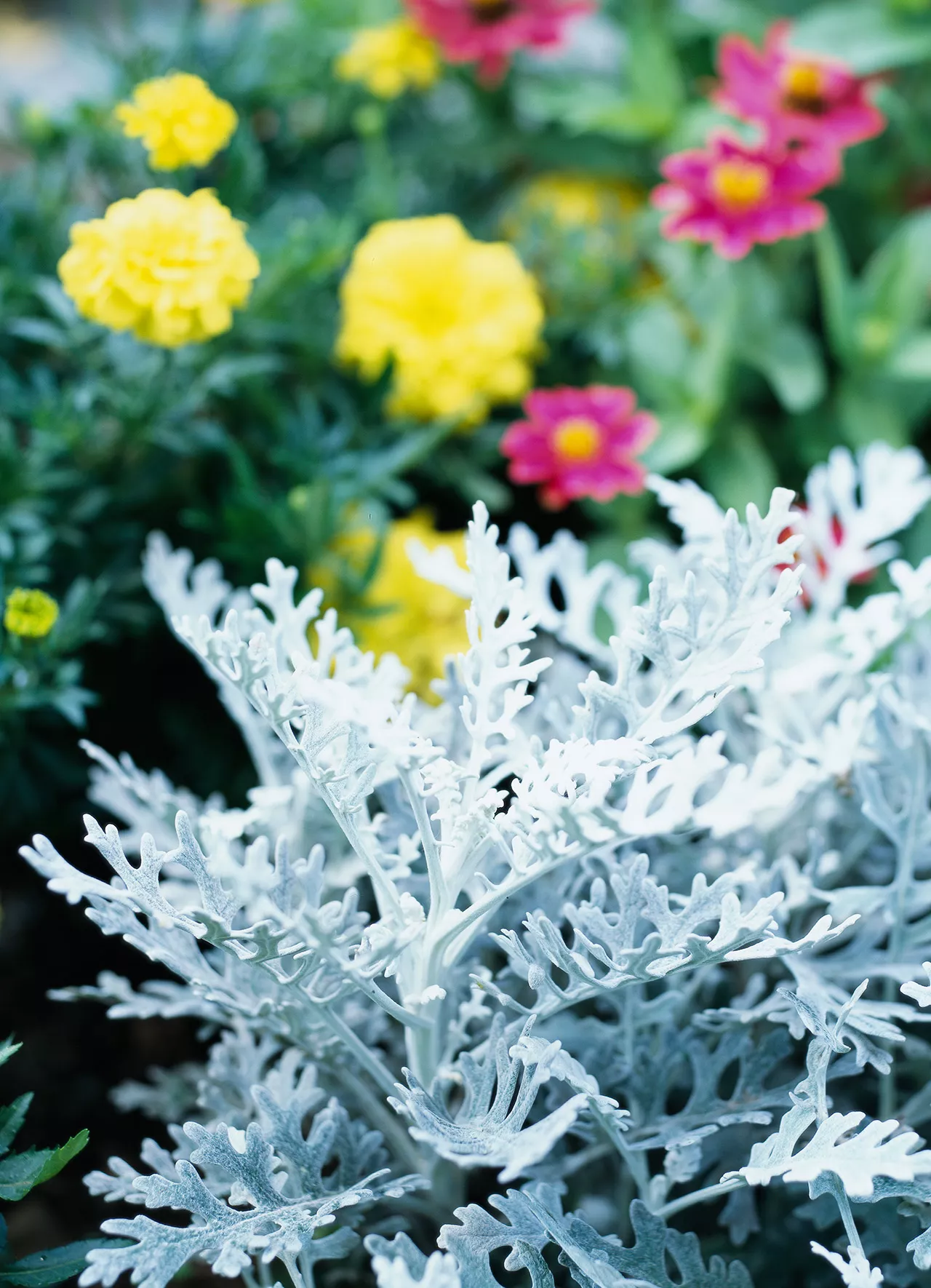
Dusty miller is a favorite because it looks good with everything. The silvery-white color is a great foil for any type of garden blossom, and the fine-textured foliage creates a beautiful contrast against other shapes of green foliage. Dusty miller has also earned a place in the garden because it’s delightfully easy to grow, withstanding heat and drought like a champion.
Geranium
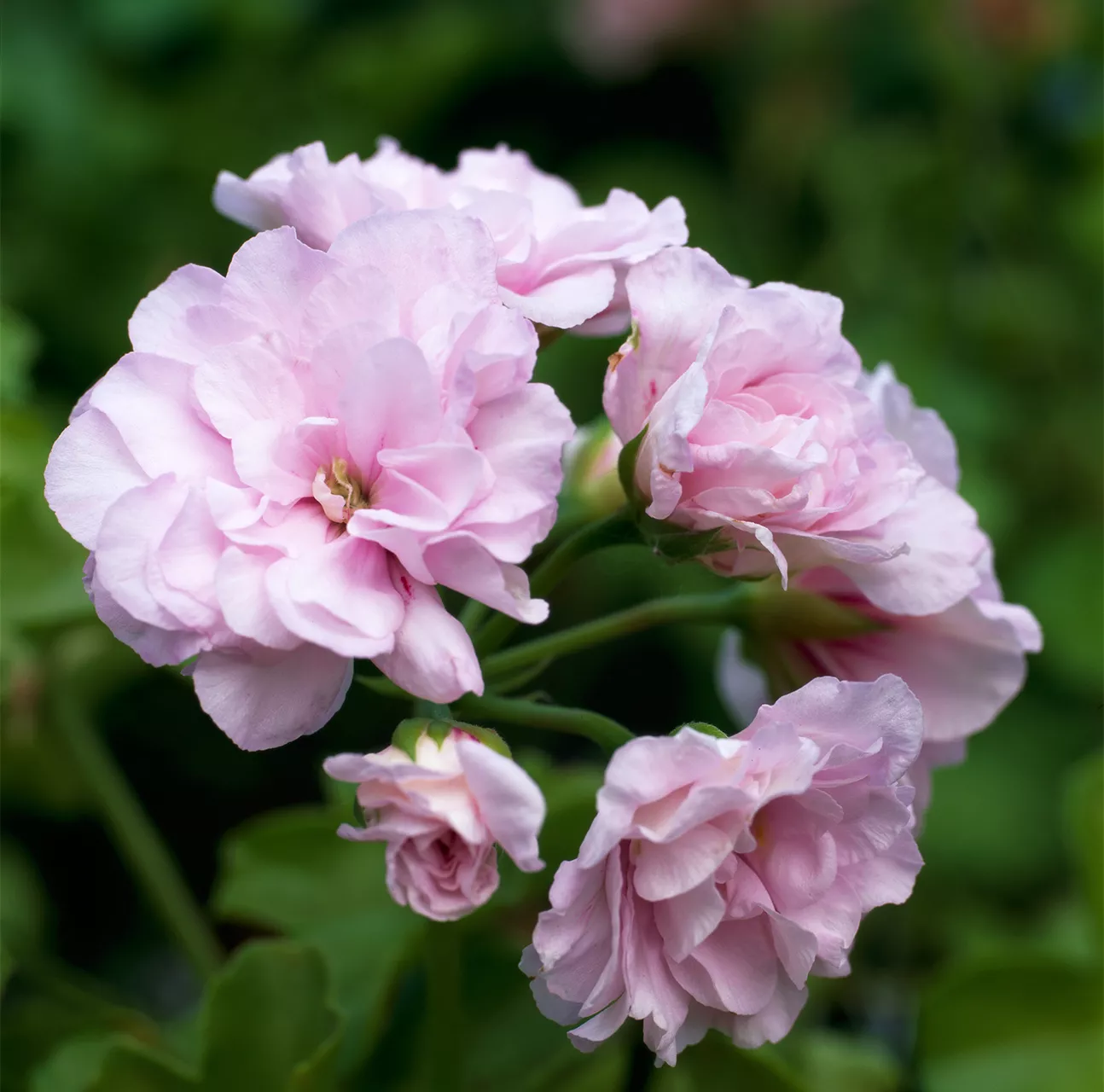
Geraniums have been a gardener’s favorite for well over a century. The old-fashioned standard for beds, borders, and containers, geranium is still one of the most popular plants today. Traditional bedding types love hot weather and hold up well to dry conditions; many offer colorful foliage. Regal, also called Martha Washington, geraniums are more delicate-looking and do better in the cool conditions of spring and fall. Though most geraniums are grown as annuals, they are perennials in Zones 10–11. Bring them indoors to overwinter, if you like, then replant outdoors in spring. They can bloom indoors all year long if they get enough light.
Nasturtiums
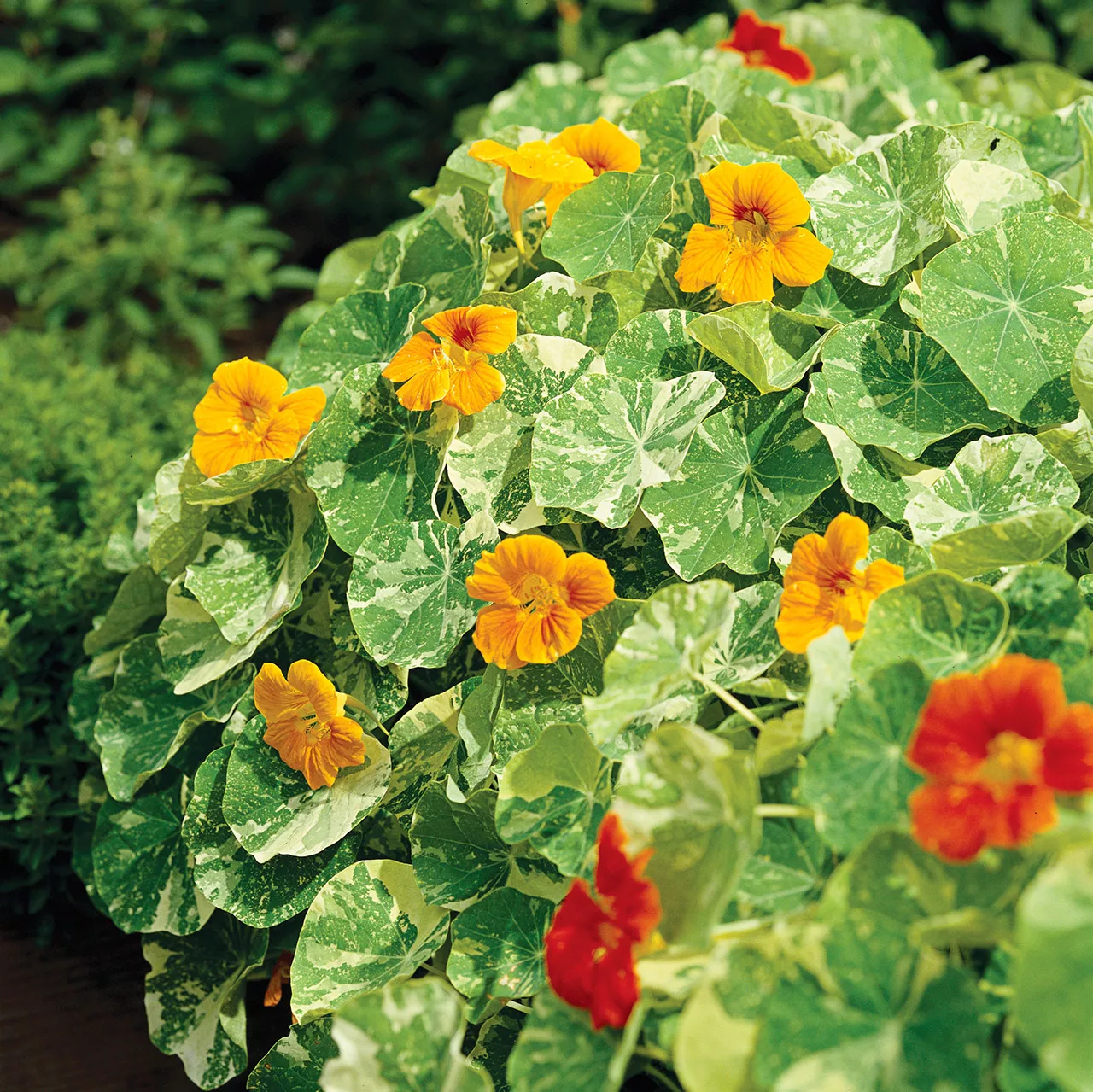
Nasturtiums are incredibly versatile. They grow easily from seed sown directly in your garden’s poorest soil and bloom all season until frost; plus, they are never greedy about food or fertilizer. Nasturtiums are available in either spreading or climbing types. Plant spreading types in large containers to spill over the sides. Plant them alongside wide paths to soften the sides for a romantic look. Use nasturtium to brighten a rock garden or between paving stones. Place them at the edges of beds and borders to fill in between other plants and add soft, flowing color. Train climbing types up trellises or alongside fences. The leaves and flowers are edible; use them as a showy plate garnish or to jazz up salads.
Sage
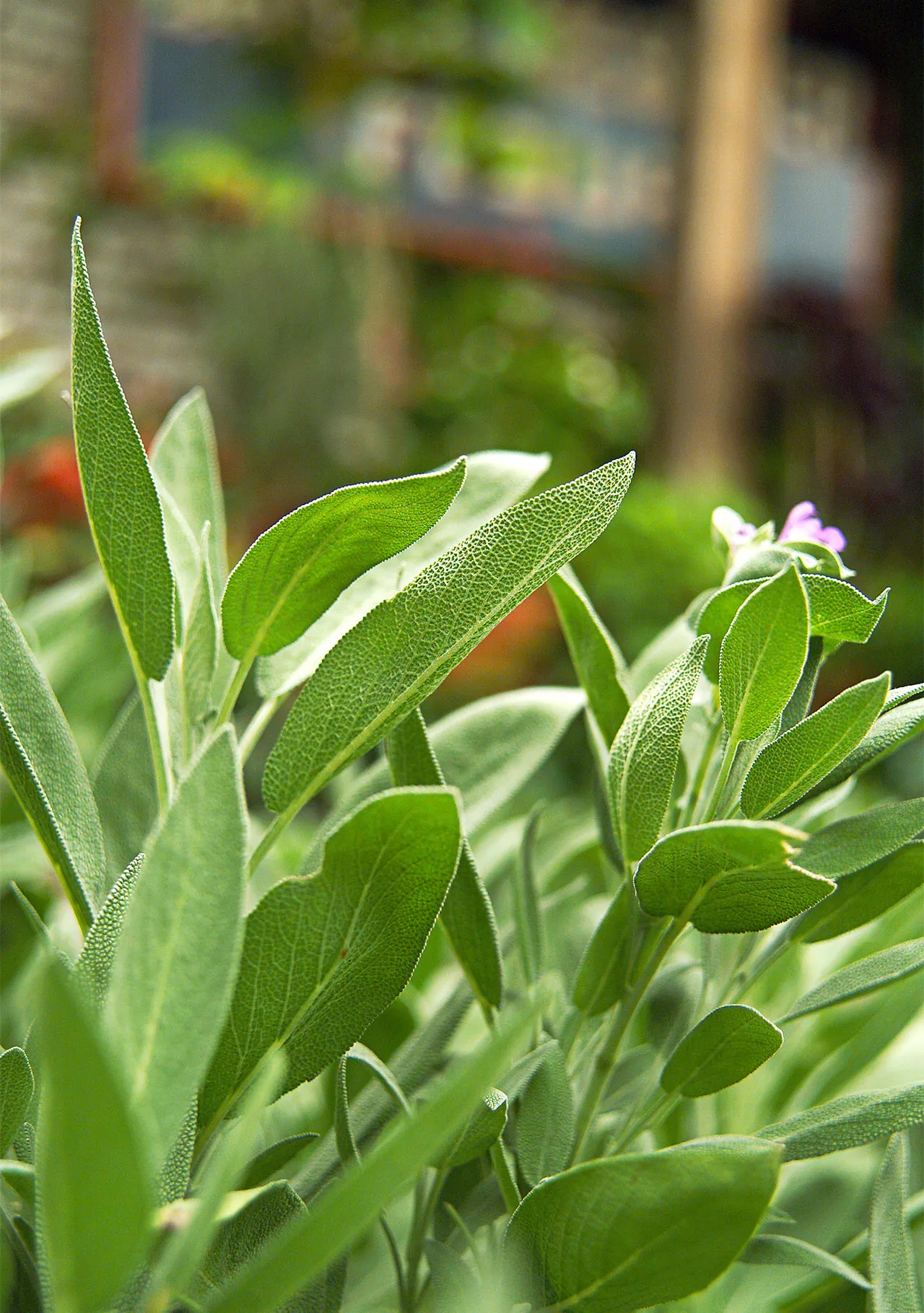
You just can’t overdo sage in the garden. This perennial herb earns its keep with fast-growing ways, beautiful blooms, and a flavor deer find distasteful. Once established, plants shrug off drought, although it’s wise to keep plants well-hydrated through the hottest parts of summer if you want a steady supply of supple foliage. Some gardeners pinch out flower buds to keep leaves forming, but the blooms are beautiful. If you choose to let plants flower, when blossoms fade, cut plants back to beneath where flower buds formed. Don’t cut back to woody stems that have no leaves; those most likely won’t sprout again. Sage plants typically require replacing every 3–4 years, as plants become woody and produce fewer leaves. The uses of sage are wide-ranging. Besides its popular use as a culinary herb, sage is also commonly pressed into service in cosmetics, perfumes, and soaps. SHanging dried leaves among woolen clothing deters moths. Burning sage removes unpleasant odors, such as lingering cigarette smoke or cooked fish smell.
Frequently Asked Questions
-
Do angelonia plants attract wildlife?
The plant attracts a host of pollinators, including hummingbirds, butterflies, and bees. It is deer-resistant and rabbit-resistant, meaning they won’t bother angelonia as long as there is other food to eat.
-
What are the best ways to use angelonia?
Angelonia is strikingly beautiful in garden beds and borders, but it also shines in mass plantings or as a container plant. The foliage—not the flowers—is fragrant, and both foliage and flowers are excellent in floral arrangements.
